Contemporary dance is a fascinating art form that combines elements of ballet, modern, and jazz dance styles. If you have ever watched a contemporary dance performance, you may have felt enthralled by the dancers’ movements and the emotions they convey. However, contemporary dance is not just about entertainment, as it offers a multitude of benefits for both the mind and body. In this article, we will explore the many advantages of practicing contemporary dance, from reducing stress and anxiety to improving memory and focus, and increasing strength and endurance. We will also dive into tips for practicing safely, how to get started, and contemporary dance’s connection to other forms of dance and popular culture. Whether you are a seasoned dancer or a beginner, there is something for everyone in the world of contemporary dance.
Mental Benefits of Contemporary Dance
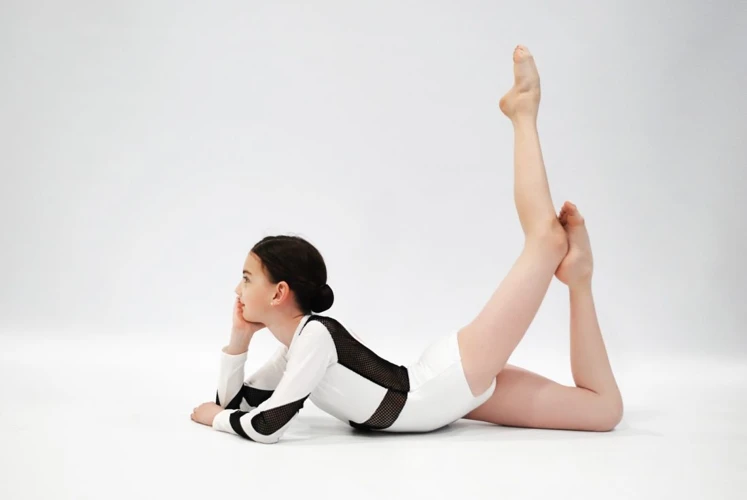
When thinking about dance, we often first consider the physical benefits it offers. However, contemporary dance is not just about moving your body – it also has numerous mental advantages. Engaging in contemporary dance on a regular basis can bring about significant improvements in your mental health and wellbeing. From reduced stress and anxiety, to enhanced memory and creativity, let’s explore the many mental benefits of contemporary dance. Whether you’re a beginner or a seasoned dancer, understanding the positive impact this art form can have on your mind is essential. In this section, we will explore these benefits in more detail and explain why anyone can and should try contemporary dance regardless of their age or abilities. If you’re interested in the history of contemporary dance or curious about how cultural influences shape this art form, you can check out these informative articles: History of Contemporary Dance and Exploring Cultural Influences in Contemporary Dance.
Reduces Stress and Anxiety
One of the most impressive mental benefits of practicing contemporary dance is the ability to reduce stress and anxiety. Dance is a form of movement that allows you to connect with your body and release tension in a healthy way. By engaging in a regular dance practice, you may find that you are able to better manage stress and anxiety in your daily life.
The physical activity of dance also releases endorphins, which are natural mood-boosting chemicals in the brain. These endorphins can help to counteract the effects of stress and anxiety while improving your overall mood. Additionally, participating in dance classes or performances can provide a sense of community and belonging, which can further alleviate stress and anxiety.
Research has shown that dance can be particularly effective in reducing symptoms of anxiety and depression. In fact, a study published in The Arts in Psychotherapy found that women who participated in contemporary dance classes reported significant reductions in both anxiety and depression after just 12 weeks.
If you are someone who struggles with stress and anxiety, incorporating contemporary dance into your routine could be a powerful tool for managing your mental health and well-being. By engaging in dance, you can release tension, boost your mood, and feel a sense of connection with others.
Internal link to consider: Improvisation in contemporary dance can be a particularly helpful avenue for reducing stress and anxiety, as it allows for a more freeform, expressive approach to movement.
Improves Memory and Focus
Contemporary dance is not just a physical form of exercise but also a mental one. One of the mental benefits of practicing contemporary dance is that it improves memory and focus.
Dancing involves learning specific steps, routines and sequences, which requires you to use your memory. As you practice and train your body to remember these steps, your memory skills improve. You’ll start to notice that you can recall the sequences of steps more quickly and with less effort.
Contemporary dance requires a high level of focus and concentration. You need to be mentally present during the dance as you react to your partner’s movements or execute more complex movements. This focus carries over to other areas of your life, helping you stay more attentive and engaged in activities outside of dance.
A 2012 study found that dancing could help improve cognitive function in older adults. The study found that dance training improved memory and attention in older adults when compared to other types of exercise. This is yet another reason why contemporary dance can be beneficial for people of all ages.
If you want to improve your memory and focus through contemporary dance, consider taking a class or practicing at home using contemporary dance techniques and moves. Additionally, choosing the right music can also help improve your memory recall and enhance your focus during dance practice. So, make use of appropriate music for your dance.
Boosts Your Mood
Practicing contemporary dance has been shown to boost your mood and improve your overall emotional well-being. This is because dancing releases endorphins, which are the body’s feel-good hormones.
Engaging in an energetic contemporary dance class or performance can leave you feeling elated and joyful. It provides a sense of release and emotional expression that allows you to let go of any negative thoughts or feelings you may be experiencing.
Contemporary dance often incorporates uplifting music and movements that are designed to inspire and motivate. This can help to alleviate symptoms of depression and anxiety and improve your overall mental state.
Another reason why contemporary dance can boost your mood is that it provides an opportunity for social interaction and connection. Dancing with others and being a part of a community can have a positive impact on your mental health and help you feel more connected to the world around you.
If you’re looking for a way to improve your mood and lift your spirits, consider giving contemporary dance a try. It’s a fun and engaging way to get your body moving and your spirits flying.
If you’re interested in learning more about the benefits of contemporary dance, check out our article about Contemporary Dance as a Form of Self-Expression and Communication. Or, if you’re a beginner looking to get started with contemporary dance, check out our tips on How to Get Started with Contemporary Dance.
Enhances Creativity
Practicing contemporary dance provides numerous mental and physical health benefits, but one of the most prominent is that it enhances creativity. Contemporary dance encourages individuals to express themselves in unique and innovative ways. The fluid movements of contemporary dance can inspire new ideas and perspectives, allowing dancers to tap into their artistic side.
The following are some ways in which contemporary dance enhances creativity:
- Freedom: Unlike more traditional forms of dance, contemporary dance allows for more freedom and self-expression. Dancers are encouraged to create their own movements rather than following set routines, which can lead to a more authentic and original type of movement.
- Collaboration: Collaborating with other dancers can lead to a sharing of ideas and perspectives, allowing for a more diverse range of creativity in dance performances.
- Exploration of Emotions: Contemporary dance often explores emotional themes and concepts, which can lead to a deeper exploration of one’s own emotions and subsequent expression of those feelings through movement.
- Use of Music: The use of music in contemporary dance can further inspire creativity, as dancers can use the rhythm and melody to create their own unique movements in response to the music.
- Experimentation: Contemporary dance encourages experimentation with new movements and ideas, allowing dancers to push boundaries and try new things.
Through these various means, contemporary dance helps individuals tap into their own creativity whether they are dancers, choreographers, or simply audience members. It is this creativity that has made contemporary dance such a popular and innovative form of art. Contemporary dance has influenced the work of famous choreographers including Martha Graham, Merce Cunningham, and Paul Taylor, among many others.[1]
Ultimately, contemporary dance can be a powerful tool for enhancing both the mind and body. By encouraging creativity, it can lead to a greater sense of self-expression and fulfillment. Through contemporary dance, one can learn to think outside of the box and explore unique ways of moving through the world. And if you’re interested in the technical aspects of contemporary dance performance, you may find that the role of costumes and lighting can also greatly contribute to the creative expression in a contemporary dance performance[2].
Physical Benefits of Contemporary Dance
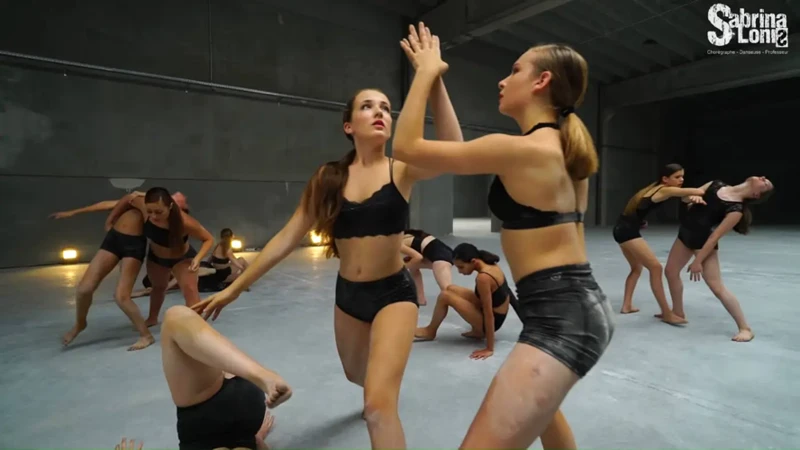
When it comes to contemporary dance, the focus tends to be on its artistic expression and creative potential. However, the physicality involved in performing contemporary dance routines cannot be overlooked. From increasing strength and endurance to enhancing cardiovascular health, the physical benefits are vast and can have a significant impact on your overall well-being. In this section, we’ll explore the ways in which contemporary dance can benefit your body and promote a healthy lifestyle. Let’s dive in!
Increases Strength and Endurance
Contemporary dance is a form of dance that requires a lot of physical strength and endurance. This type of dance involves a lot of movement from the entire body, including jumps, turns, and lifts. As a result, practicing contemporary dance can have significant benefits for your physical health.
Increases Strength: Contemporary dance requires a lot of physical strength, particularly in the legs, core, and arms. Many movements in contemporary dance involve jumping, which helps to build leg muscles, including the quadriceps and hamstrings. Additionally, lifts require arm and core strength, which can help to tone and sculpt those muscles. By practicing contemporary dance regularly, you can increase your overall strength and build lean, toned muscles.
Improves Endurance: Another benefit of practicing contemporary dance is improved endurance. Because contemporary dance involves a lot of movement and energy expenditure, it can help to improve cardiovascular endurance. This means that your body will be better able to handle physical exertion over time, which can help you perform better in other areas of your life, such as sports, running, or other physically demanding activities.
To reap the full benefits of increased strength and endurance from contemporary dance, it’s important to incorporate a regular practice into your routine. This could mean joining a dance class, working with a private instructor, or practicing on your own at home. Additionally, it’s important to take care of your body by staying hydrated, fueling with healthy foods, and giving yourself time to rest and recover. By doing so, you can enjoy the physical benefits of contemporary dance while also improving your overall health and wellbeing.
| Benefits of Contemporary Dance for Strength and Endurance: |
|---|
| Builds leg muscles, including quadriceps and hamstrings |
| Tones and sculpts arm and core muscles |
| Improves cardiovascular endurance |
| Increases overall strength and stamina |
Improves Flexibility and Balance
Contemporary dance is a popular form of dance that offers a wide array of physical benefits. One of the most significant advantages of practicing contemporary dance is its ability to improve flexibility and balance.
Flexibility: Contemporary dance involves a combination of movements that require significant flexibility. Dancers are challenged to stretch their muscles to their limit, resulting in improved flexibility over time. This increased flexibility not only helps to prevent injuries, but it also allows the dancer to perform more complex movements with greater ease and fluidity.
Balance: Balance is a key component of contemporary dance. Dancers must be able to maintain balance while performing a variety of movements, including leaps and turns. With regular practice, dancers can improve their balance and develop stronger core muscles. This not only improves their physical abilities but also enhances their overall performance.
To further enhance flexibility and balance, dancers can incorporate specific exercises into their practice routine. Some of these exercises include:
| Exercise | Description |
|---|---|
| Stretching | Performing stretching exercises before and after dance practice can help to improve flexibility and reduce the risk of injury. |
| Pilates | Pilates is a form of exercise that emphasizes core strength, flexibility, and balance. Incorporating Pilates into a dance practice routine can help to improve overall physical abilities. |
| Yoga | Yoga is another form of exercise that can improve flexibility and balance. It is particularly useful for strengthening the muscles that support the spine and improving posture, which can enhance dance performance. |
The physical benefits of contemporary dance are numerous, and its ability to improve flexibility and balance is just one of the many advantages that it offers. With regular practice and a focus on proper technique, dancers can reap the benefits of this beautiful and expressive form of art while also improving their physical health and wellbeing.
Enhances Cardiovascular Health
Contemporary dance is a great way to improve your cardiovascular health, which is crucial for maintaining a healthy heart and reducing the risk of cardiovascular diseases. This style of dance involves continuous movement and intense physical effort, which can increase your heart rate and breathing rate, resulting in improved cardiovascular endurance.
Here are some specific ways in which contemporary dance can enhance your cardiovascular health:
- Increases heart rate: Contemporary dance involves dynamic movements that challenge the body’s cardiovascular system, causing the heart to beat faster and work harder. This increased heart rate helps to improve blood flow and oxygen delivery to the muscles, which can boost your endurance and overall cardiovascular health.
- Improves lung capacity: Contemporary dance requires deep breathing and proper oxygen uptake, which can help to improve lung capacity and overall respiratory health. Over time, this can translate to better endurance, improved stamina, and reduced risk of respiratory illnesses and conditions.
- Burns calories: Like most physical activities, contemporary dance can burn a significant amount of calories, which can help to maintain a healthy weight and reduce the risk of obesity-related cardiovascular diseases. Depending on the intensity of the dance routine, you can burn up to 500 calories in just one hour of contemporary dance.
- Reduces blood pressure: Contemporary dance can help to regulate blood pressure by reducing arterial stiffness and increasing vascular health. This can lower the risk of high blood pressure, stroke, and other cardiovascular diseases.
Practicing contemporary dance can greatly enhance your cardiovascular health by improving your heart rate, lung capacity, and metabolic rate, burning calories and helping to reduce blood pressure. In addition to these physical benefits, contemporary dance can also have a positive impact on your mental and emotional well-being, making it a great overall practice for improving your health and wellness.
Relieves Pain and Stiffness
Contemporary dance is a wonderful form of exercise that can provide many benefits to your body, including relieving pain and stiffness. This is especially important for those who have physically demanding jobs or who suffer from chronic pain conditions.
According to studies, participating in regular dance sessions can help reduce muscle and joint pain, as well as stiffness in the body. This is due to the fact that dancing involves a wide range of movements that can stretch and strengthen the muscles and improve joint mobility.
How Does Contemporary Dance Help Relieve Pain and Stiffness?
Contemporary dance involves a series of movements that range from slow and gentle to fast and intense. These movements target various parts of the body, including the arms, legs, back, and core.
Increased Blood Flow: Dancing can increase blood flow and circulation to different parts of the body, which can help reduce inflammation and promote healing.
Improved Flexibility: Many contemporary dance movements involve stretching and lengthening of the muscles. This can help improve flexibility and range of motion, which can reduce pain and stiffness.
Core Strengthening: Contemporary dance involves many movements that require the engagement of the core muscles, such as planks and abdominal contractions. This can help strengthen the muscles that support the spine, reducing back pain.
Low-Impact Exercise: Many of the movements in contemporary dance are low-impact and gentle on the joints, making it an excellent option for people with arthritis or other joint conditions.
Psychological Benefits: Finally, contemporary dance can also provide psychological benefits that can reduce pain and relieve stiffness. Dancing can help reduce stress and anxiety, which can exacerbate pain and stiffness.
All of these benefits make contemporary dance an excellent option for individuals who are looking to alleviate pain and stiffness in their bodies. Whether you are recovering from an injury, managing a chronic condition or just looking to stay active and healthy, contemporary dance is an excellent exercise option to include in your routine.
Contemporary Dance as a Form of Self-Expression and Communication
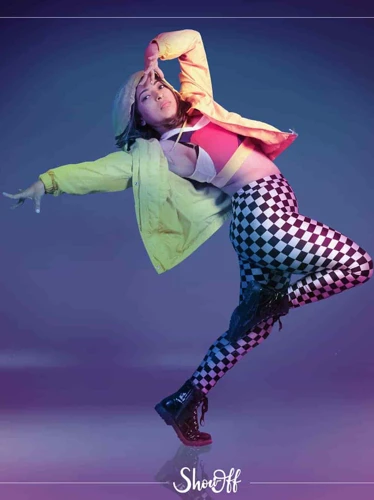
Contemporary dance is a powerful form of self-expression and communication that allows dancers to convey emotions and ideas through movement. Unlike other forms of structured dance, contemporary dance is an open-ended and fluid art form that doesn’t rely on strict choreography or traditional movements. This freedom of expression allows dancers to use their bodies to communicate in a way that is unique to them.
Through contemporary dance, dancers are able to express their innermost emotions and thoughts, often without the use of words. The physical movements of contemporary dance can be used to convey grief, joy, anger, confusion, and a range of other emotions. Dancers can use their bodies to tell stories and communicate complex ideas that may be difficult to express through words.
Contemporary dance also encourages dancers to tap into their creativity and to approach dance in a way that is unique to them. Choreography is often created collaboratively, with dancers being given the freedom to contribute their own movements and ideas. This allows dancers to feel a sense of ownership over their performances and to create a piece of art that truly reflects their own personal style and perspective.
Contemporary dance can serve as a means of communication between people from different cultures and backgrounds. By using movement as a universal language, contemporary dance can provide a way for individuals to connect and understand one another on a deeper level.
In short, contemporary dance is not just a physical art form, but also a powerful form of self-expression and communication that has the ability to connect people and convey important messages.
Benefits of Practicing Contemporary Dance for People of All Ages and Abilities
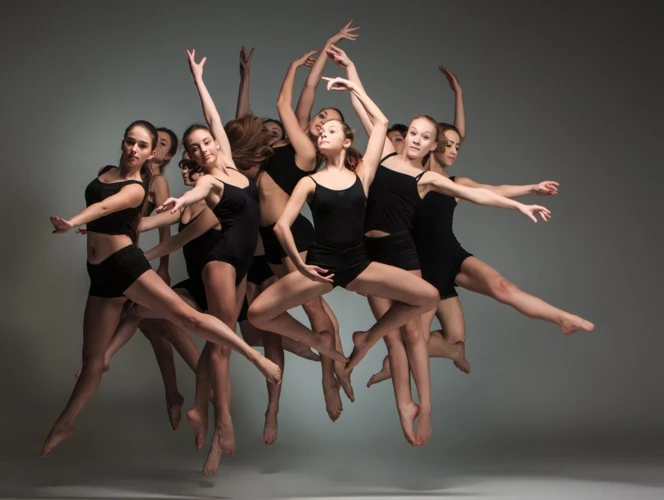
Contemporary dance is an inclusive form of dance that is accessible to people of all ages and abilities. Unlike more traditional forms of dance, contemporary dance is not limited by strict rules or techniques, and instead encourages the individual to express themselves freely through movement.
Perhaps one of the greatest benefits of practicing contemporary dance is that it allows people of all ages and abilities to engage in physical activity in a way that is enjoyable and empowering. Even those who have never danced before can participate in a contemporary dance class and experience the joy of self-expression through movement.
For children, contemporary dance is a great way to develop coordination, balance, and rhythm, all while having fun and playing with movement. It can also help to enhance their creativity and self-esteem.
For teenagers and young adults, contemporary dance can be a great outlet for self-expression and a way to relieve stress and anxiety. It can also be a way to build social connections and create a sense of community.
For older adults, contemporary dance can help to improve balance, flexibility, and strength, as well as reduce the risk of falls. It can also be a great way to stay active and engaged in a fun and social setting.
Additionally, contemporary dance can be adapted to meet the needs of people with disabilities, including those who use wheelchairs or have sensory impairments. By emphasizing movement and self-expression over technique, contemporary dance can provide a space for people of all abilities to engage with movement in a meaningful way.
The benefits of practicing contemporary dance are numerous and extend to people of all ages and abilities. Whether you are looking to improve your physical health, enhance your creativity, or simply have fun and express yourself through movement, contemporary dance is a great way to achieve these goals in a welcoming and inclusive environment.
How to Get Started with Contemporary Dance
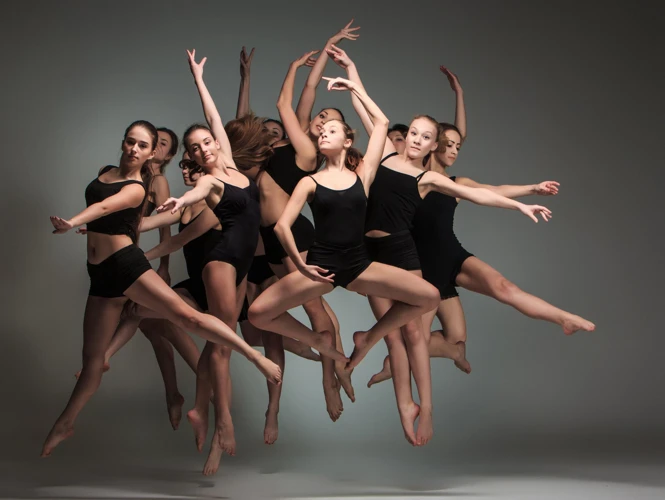
If you’re interested in getting started with contemporary dance, there are several steps you can take to begin your journey. Here are some tips to help you get started:
1. Find a local dance studio or community center: One of the best ways to start learning contemporary dance is by finding a local dance studio or community center that offers classes. Look for classes that are specifically designed for beginners, so you can get started at a comfortable pace.
2. Attend a dance festival or workshop: Another great way to get started with contemporary dance is by attending a dance festival or workshop. These events often offer classes for different skill levels, including beginner-level classes.
3. Watch contemporary dance performances: Watching contemporary dance performances can help you get a better understanding of the art form and its style. Look for performances in your area or online to gain inspiration and ideas for your own practice.
4. Invest in proper dance attire: Investing in proper dance attire, such as dance shoes and comfortable clothing, can help you feel more confident and comfortable during your practice. Check with your dance studio or instructor for any specific clothing requirements.
5. Practice regularly: Like any skill, practicing regularly is key to improving your abilities. Try to practice dance at least a few times per week and gradually increase your practice time as you become more comfortable.
6. Be patient and give yourself time to improve: Remember that learning a new skill takes time and patience. Don’t be discouraged if you struggle at first or don’t see immediate improvements. Stick with it and focus on making gradual progress over time.
By following these steps, you can start your journey into the world of contemporary dance and enjoy the numerous benefits it has to offer for your mind and body.
Tips for Practicing Contemporary Dance Safely
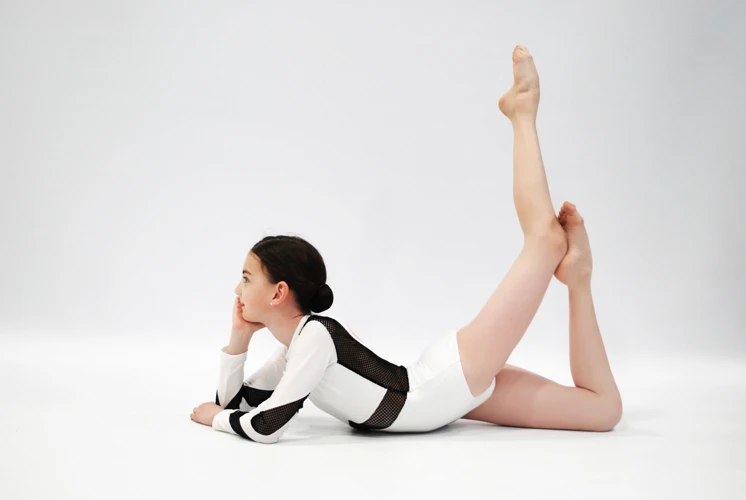
Practicing contemporary dance can be a great way to stay fit, express yourself creatively, and connect with others in a community of dancers. However, it’s important to practice safely to avoid injury and ensure that you can continue to dance for years to come. Here are some tips for staying safe while practicing contemporary dance.
Warm up properly: Warming up before any physical activity is crucial for preventing injury. Take at least 10-15 minutes to stretch and prepare your muscles before you start dancing. Focus on stretching the major muscle groups that you will be using during your routine.
Use proper technique: Learning proper technique is essential for preventing injuries while practicing contemporary dance. Take the time to learn the correct movements from a qualified instructor, and make sure that you are using proper alignment and form.
Gradually increase intensity: If you’re new to contemporary dance, it’s important to start slowly and gradually increase the intensity of your practice over time. This will help you avoid overuse injuries and improve your overall endurance.
Stay hydrated: Drinking plenty of water is essential for staying hydrated during a dance practice. Make sure to drink water before, during, and after your workout to stay energized and prevent dehydration.
Listen to your body: Pay attention to any pain or discomfort that you may experience during your dance practice. If something doesn’t feel right, take a break and rest. Pushing through pain can lead to serious injuries.
Wear proper footwear: Wearing the right shoes is important for reducing the risk of injury. Choose shoes that are specifically designed for dance, as they provide the right amount of support and cushioning.
Cool down after your practice: After your dance practice, take some time to cool down and stretch your muscles. This will help prevent soreness and reduce the risk of injury.
By following these tips, you can enjoy the physical and mental benefits of practicing contemporary dance while staying safe and injury-free. Remember to always listen to your body and take breaks when needed. With time and practice, you’ll be able to improve your skills and technique while staying healthy and strong.
How to Enhance Your Contemporary Dance Practice

To enhance your contemporary dance practice, there are a few things you can do to take your skills to the next level. First and foremost, continue to take classes and workshops to improve your technique and expand your knowledge of the art form. You can also challenge yourself by practicing dances that are outside of your comfort zone or by learning from different choreographers.
Watch Performances
Another way to enhance your contemporary dance practice is to watch performances by professional dancers and companies. This can give you inspiration and ideas for your own movements and techniques, as well as expose you to different styles of contemporary dance. Consider attending performances in person or watching recorded shows online or on television.
Use Music
Music can also be a valuable tool to enhance your contemporary dance practice. Experiment with different genres and styles of music to find what inspires you and makes you want to move. Incorporating music into your practice can also help with rhythm and timing, allowing you to better understand the nuances of the music and how they relate to your movements.
Visualize and Practice
Visualization can also be a helpful tool to enhance your contemporary dance practice. Close your eyes and imagine yourself performing a specific dance, making mental notes of the movements and expressions you would use. Then, when you practice, incorporate these visualizations into your movements and techniques.
Take Care of Your Body
Taking care of your body is crucial when it comes to enhancing your contemporary dance practice. Proper nutrition, hydration, and rest are essential for your body to function at its best. Additionally, stretching and warming up before your practice can help prevent injuries and improve your flexibility, which in turn can enhance your movement quality.
Collaborate with Others
Collaborating with others can also help enhance your contemporary dance practice. Consider working with other dancers, musicians, or visual artists to create new works or to explore different artistic mediums. This can bring fresh perspectives and ideas to your dance practice, as well as teach you new skills and techniques.
By taking these steps to enhance your contemporary dance practice, you can not only improve your own skills and techniques, but also gain a deeper appreciation and understanding of the art form. With dedication, creativity, and hard work, you can take your contemporary dance practice to the next level and continue to grow as a dancer and artist.
Contemporary Dance as a Community
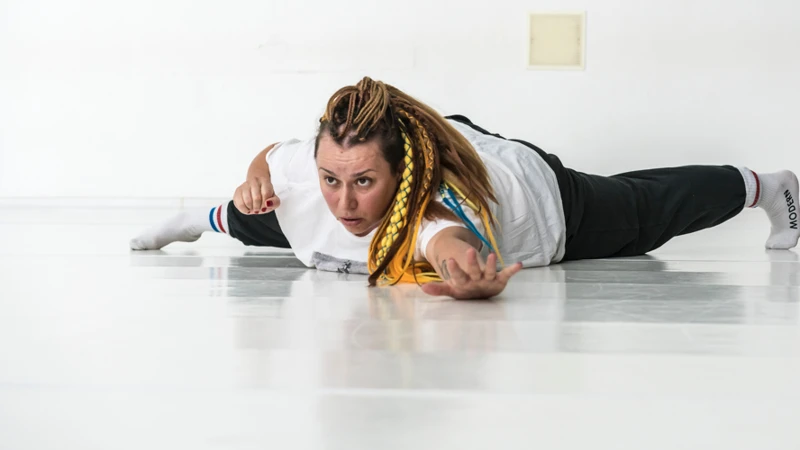
One of the most wonderful things about contemporary dance is that it is not just a solitary art form. Contemporary dance is a community, a collective of dancers, choreographers, instructors, and artists who are all passionate about the art form.
Being part of the contemporary dance community means having access to a diverse group of people who are all committed to the same goal: expressing themselves through dance. It also means being able to collaborate and share ideas with other dancers and artists, which can be incredibly inspiring and motivating.
Additionally, the community aspect of contemporary dance can provide a sense of belonging and connection that may be hard to find in other areas of life. For many dancers, the studio becomes a second home, and the other members of the community become like family.
The community provides opportunities for learning and growth. Dancers can take classes and workshops with other teachers and choreographers, attend performances and lectures, and participate in residencies and exchange programs. This exposure to different perspectives and approaches can expand a dancer’s repertoire and inspire new ideas and techniques.
In many ways, the community aspect of contemporary dance is what makes it such a vibrant and dynamic art form. The connections and relationships formed within the community can last a lifetime, and the support and encouragement of fellow dancers can be invaluable in helping dancers push beyond their limits and achieve their goals.
If you are interested in joining the contemporary dance community, there are many places to start. Look for local studios or dance companies, attend performances and workshops, and connect with other dancers and artists online. With a little effort, you can become part of a supportive and inspiring community that shares your love of dance.
Contemporary Dance and Its Connection to Other Forms of Dance
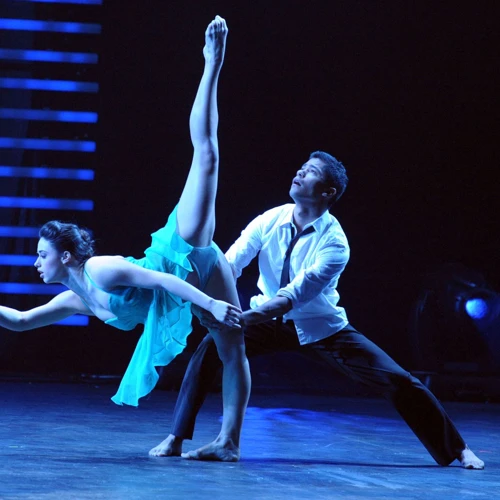
Contemporary dance is a genre that has its roots in modern dance and postmodern dance, which emerged in the 20th century as a reaction to traditional ballet. While contemporary dance draws from a range of styles and techniques, it maintains a distinct identity that sets it apart from other forms of dance.
One of the key connections between contemporary dance and other forms of dance is the use of technique. Ballet technique, for example, emphasizes turnout and long lines, while contemporary dance focuses on exploring the full range of movement of the body, including floor work and fluidity of movement. Other dance genres, such as jazz and hip hop, also have their own distinctive techniques that inform contemporary dance.
Music is another important connection between contemporary dance and other forms of dance. While contemporary dance can be performed to a variety of music styles, it often incorporates elements of modern and experimental music. Similarly, the use of rhythm and beat is a common feature of both contemporary dance and hip hop.
In terms of performance, contemporary dance shares some similarities with other theatrical and performance arts, such as theater, performance art, and visual art. Like these other forms, contemporary dance often seeks to convey a message or tell a story, and may use props, sets, and lighting to enhance the performance.
Despite its connections to other forms of dance, contemporary dance remains a distinct genre that is constantly evolving and pushing the boundaries of what is possible. Whether performing in classical concert halls or on the streets of urban cities, contemporary dancers continue to push the boundaries of movement, technique, and expression, creating a unique art form that is both accessible and challenging.
Contemporary Dance and Its Influence on Popular Culture
Contemporary dance is not just an art form – it has also made a significant impact on popular culture. In movies, music videos, and even video games, contemporary dance has been showcased as a means of storytelling and emotional expression.
One of the most well-known displays of contemporary dance in popular culture is the choreography of Wade Robson in the music video for Michael Jackson’s hit song “Black or White.” The energetic and emotional dance moves perfectly complement the powerful message of the song, making it an iconic moment in contemporary dance history.
Contemporary dance has also been featured in films such as “Step Up” and “Center Stage,” which showcase the athleticism and artistry of contemporary dancers. The popular dance competition show “So You Think You Can Dance” has brought contemporary dance to a mainstream audience, allowing people to appreciate the beauty and complexity of this dance form.
Contemporary dance has also influenced the fashion industry, with designers and models incorporating contemporary dance moves into their runway shows. The fluidity and grace of contemporary dance can be seen in clothing design and even in the way models walk down the runway.
Contemporary dance has also expanded its influence to video games. The popular game “Dance Dance Revolution” includes contemporary dance moves as part of its gameplay, providing a fun and interactive way for people of all ages to experience the joy of contemporary dance.
Contemporary dance has had a profound impact on popular culture, from music videos to fashion to video games. Its unique blend of athleticism, emotion, and self-expression has made it a beloved art form that continues to inspire and captivate audiences around the world.
Conclusion
In conclusion, practicing contemporary dance offers a wide range of benefits for both the mind and body. It not only provides a great workout but also improves mental health and emotional well-being. Through the expression of movement, contemporary dance allows individuals to tap into their creativity, communicate their emotions, and connect with others on a deeper level.
Contemporary dance can be enjoyed by people of all ages and abilities, making it a versatile form of exercise that can be tailored to individual needs and preferences. Whether you’re looking to increase strength, flexibility, or cardiovascular health, contemporary dance has something to offer.
To get started with contemporary dance, there are many resources available, from local dance studios to online classes. It’s important to practice safely, however, and to listen to your body to avoid injury. By enhancing your practice with proper technique and by connecting with others in the dance community, you can take your contemporary dance experience to the next level.
Overall, contemporary dance is a valuable form of artistic expression that has contributed to the evolution of popular culture. Its impact extends beyond the stage and into daily life, enriching the lives of performers and audiences alike. So if you’re looking for a fun and fulfilling way to improve your physical and mental well-being, consider giving contemporary dance a try.
Preguntas frecuentes
What is contemporary dance?
Contemporary dance is a style of dance that is characterized by its versatility and freedom of movement, drawing inspiration from various dance genres and styles.
What are the mental benefits of practicing contemporary dance?
Practicing contemporary dance can reduce stress and anxiety, improve memory and focus, boost your mood, and enhance creativity.
What are the physical benefits of practicing contemporary dance?
Practicing contemporary dance can increase strength and endurance, improve flexibility and balance, enhance cardiovascular health, and relieve pain and stiffness.
Is contemporary dance suitable for people of all ages and abilities?
Yes, contemporary dance is a form of dance that can be practiced by people of all ages and abilities.
How can I get started with contemporary dance?
You can get started with contemporary dance by finding a local studio or taking online classes, and practicing regularly.
What are some tips for practicing contemporary dance safely?
Some tips for practicing contemporary dance safely include warming up before dancing, listening to your body and taking breaks when needed, and wearing appropriate dance shoes.
How can I enhance my contemporary dance practice?
You can enhance your contemporary dance practice by setting goals, practicing regularly, and exploring different styles and techniques.
What is the connection between contemporary dance and other forms of dance?
Contemporary dance draws inspiration from various other forms of dance, including ballet, jazz, and modern dance.
How has contemporary dance influenced popular culture?
Contemporary dance has influenced popular culture through various dance competitions, performances, and collaborations in music videos and live performances.
Why is contemporary dance valuable for self-expression and communication?
Contemporary dance allows for individual expression and storytelling through movement, providing a powerful platform for communication and connection with others.

